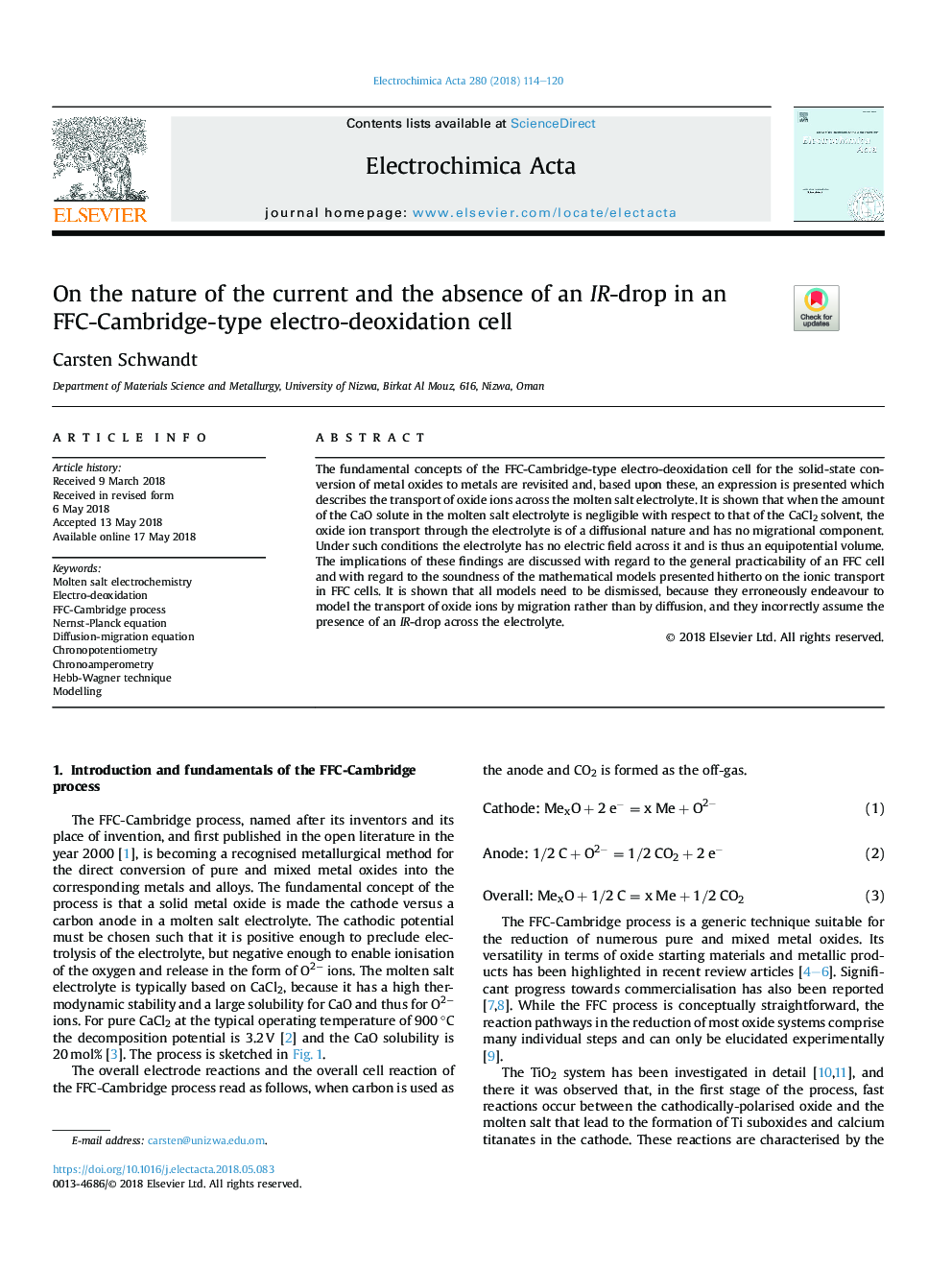| Article ID | Journal | Published Year | Pages | File Type |
|---|---|---|---|---|
| 6602522 | Electrochimica Acta | 2018 | 7 Pages |
Abstract
The fundamental concepts of the FFC-Cambridge-type electro-deoxidation cell for the solid-state conversion of metal oxides to metals are revisited and, based upon these, an expression is presented which describes the transport of oxide ions across the molten salt electrolyte. It is shown that when the amount of the CaO solute in the molten salt electrolyte is negligible with respect to that of the CaCl2 solvent, the oxide ion transport through the electrolyte is of a diffusional nature and has no migrational component. Under such conditions the electrolyte has no electric field across it and is thus an equipotential volume. The implications of these findings are discussed with regard to the general practicability of an FFC cell and with regard to the soundness of the mathematical models presented hitherto on the ionic transport in FFC cells. It is shown that all models need to be dismissed, because they erroneously endeavour to model the transport of oxide ions by migration rather than by diffusion, and they incorrectly assume the presence of an IR-drop across the electrolyte.
Keywords
Related Topics
Physical Sciences and Engineering
Chemical Engineering
Chemical Engineering (General)
Authors
Carsten Schwandt,
